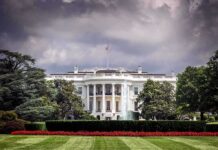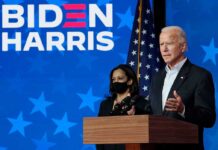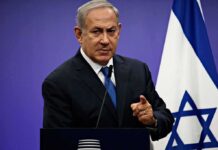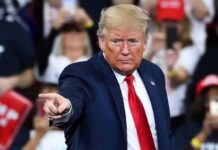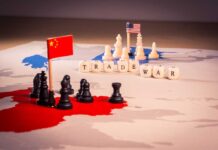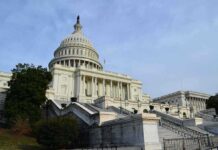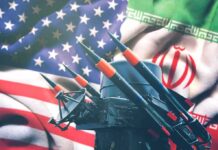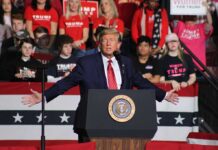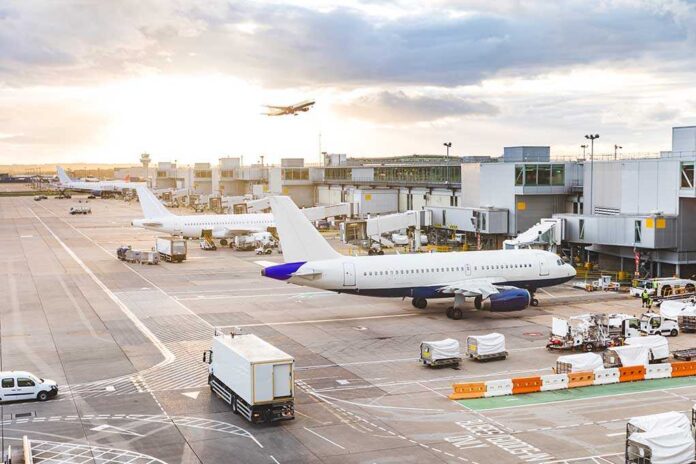
China’s sudden reversal of its month-long Boeing delivery ban reveals the immediate success of President Trump’s trade diplomacy, potentially saving thousands of American jobs in the aviation sector.
Key Takeaways
- China has lifted its ban on Boeing aircraft deliveries following a trade truce with the Trump administration, allowing Chinese airlines to accept American-manufactured planes.
- Under the 90-day truce, the US will reduce tariffs on most Chinese imports from 145% to 30%, while China will cut duties on American goods from 125% to 10%.
- Boeing had planned to deliver 50 jets to Chinese carriers this year, with China representing approximately 20% of Boeing’s global demand.
- The trade agreement demonstrates President Trump’s commitment to protecting American manufacturing jobs and correcting unfair trade practices that have damaged US industries.
Trump’s Trade Diplomacy Reopens Critical Market for Boeing
Chinese authorities have officially notified domestic airlines and government agencies that they are now permitted to accept deliveries of American-manufactured aircraft, marking a significant win for the Trump administration’s trade strategy. This policy reversal comes on the heels of productive trade talks in Geneva between US and Chinese officials that resulted in a temporary tariff reduction agreement aimed at easing tensions between the world’s two largest economies. The ban had severely restricted Boeing’s ability to deliver aircraft to one of its most valuable markets, with China accounting for approximately 20% of Boeing’s global demand.
Under the terms of the new trade truce, the United States will reduce duties on most Chinese imports from 145% to 30% for a 90-day period. In return, China will cut tariffs on American goods from 125% to 10% and remove additional countermeasures that had effectively blocked Boeing from accessing the Chinese market. This strategic pause in the trade war provides an opportunity for both sides to reassess their positions while allowing American manufacturers like Boeing to resume business operations in China.
Boeing’s Recovery Challenges Despite China’s Concession
While the lifting of the ban represents a positive development, Boeing still faces significant hurdles in fulfilling its delivery obligations. The company had planned to deliver 50 jets to Chinese carriers this year, with 41 already in production or pre-built. However, some jets at Boeing’s delivery center in China were returned to the United States last month, and it remains unclear how quickly deliveries can resume after Chinese customers previously refused acceptance of these aircraft. The 90-day window provided by the tariff truce may not be sufficient to resolve all logistical complications.
“China has lifted its month-long ban on Boeing deliveries following the nation’s trade truce with the White House,” according to Bloomberg.
Boeing’s Chinese business has suffered significant disruption in recent years. Nearly a quarter of the company’s output was sent to China in 2018, but no major orders have been received from Chinese airlines due to escalating trade tensions. This occurred alongside safety concerns about Boeing’s 737 Max aircraft, which China was the first to ground in 2019 following two fatal crashes. Additional scrutiny followed a mid-flight incident involving a Boeing 737 Max in January, further damaging the company’s reputation.
Broader Trade Implications and American Manufacturing Jobs
President Trump’s trade strategy appears to be working beyond just the Boeing concession. Commerce Secretary Howard Lutnick recently indicated that trade agreements with international partners are creating new opportunities for American manufacturers. The UK is reportedly planning a significant purchase of Boeing aircraft as part of its own trade arrangements with the United States, representing a potential $10 billion windfall for the American aerospace giant.
“The UK is expected to buy $10 billion worth of Boeing planes as part of its tariff pact with the White House,” – said Commerce Secretary Howard Lutnick
While the current trade truce represents only a temporary reduction in tariffs, it demonstrates how President Trump’s firm stance on unfair trade practices can effectively pressure economic competitors like China into making concessions. Chinese airlines now have flexibility to organize deliveries according to their own schedule and terms, though Boeing would naturally prefer to deliver all 50 jets as originally planned rather than seeking alternative buyers in countries like India, Malaysia, and Saudi Arabia who have expressed interest in the 737 Max aircraft.
America First Trade Policy Shows Results
The Trump administration’s approach to international trade continues to prioritize American workers and manufacturers over globalist policies that have hollowed out domestic industries. By using tariffs as leverage against China’s unfair trade practices, President Trump has successfully reopened a critical market for one of America’s largest exporters. The Boeing case illustrates how strategic trade pressure can achieve concrete results, even if temporary, while negotiations continue toward more permanent solutions that protect American jobs and industrial capacity.
“Reduce aggregate duties on most Chinese imports from 145% to 30% for 90 days,” according to Bloomberg.
The outcome of this trade dispute will have significant implications for thousands of American aerospace workers and the broader manufacturing sector. As Boeing attempts to recover from safety issues and supply chain disruptions, access to the Chinese market represents a crucial lifeline for maintaining production levels and preserving skilled manufacturing jobs in the United States. The Trump administration’s firm but pragmatic approach demonstrates that putting American interests first can yield tangible benefits for workers and companies.


 News Editor
News Editor
